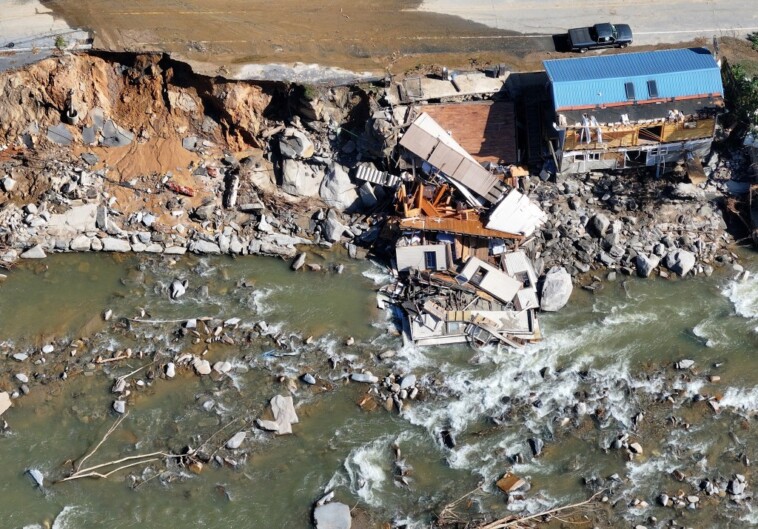The feds forgot this town but Helene did not.
Hurricane Helene rocked the Southeast over a week ago killing an estimated 232 people, yet some of the hardest hit are still waiting for the federal government to show up.
In North Carolina, where nearly 75,000 people are still without power, the isolated Appalachian town of Bat Cave — with a population of just 180 — has been left stranded by the Federal Emergency Management Agency.
Residents say the elderly and injured were airlifted out by the National Guard and Henderson County officials following Helene, but all that’s left is a team of six Louisiana State Police on foot “keeping an eye on everything.”
The Category 4 storm is the deadliest mainland US hurricane since Katrina rocked the Gulf Coast in 2005.
Military helicopters fly right on by the unincorporated Bat Cave, locals say.
Residents fear that, if the feds do show up, they will halt building repair efforts or tell homeowners they can’t rebuild at all, and must evacuate.
Chelsea Atkins, 38, a health researcher, originally from Buffalo, NY, thought she was going to die when Helene hit Bat Cave.
“A tree came through our sliding glass doors and all the water came in,” she told The Post. “It took out our fireplace, our china cabinet, all of our furniture, everything.”
She and her husband, Andy Wells, 40, sought shelter in the foyer of a small white brick post office with their neighbor Kendall and her fiancée Curtis McCart, 58, the morning that remnants of Helene hit.
Atkins lost a Tortoiseshell rescue cat named Macaroon when floodwaters pushed in the door to the post office.
“It was wild,” Atkins told The Post.
“I can really handle a lot, but I looked at my neighbor and asked ‘are we going to die?’”
FEMA called Atkins to arrange an inspection of her home, but they never came because the road is closed.
The Post managed to navigate downed power lines and collapsed sections of road to get to Bat Cave, however.
“FEMA hasn’t been here,” Atkins said.
“Nobody’s bringing in supplies except civilians. … It’s been a civilian run operation since day one.”
“I haven’t seen anyone with a FEMA uniform … At this point I don’t care if FEMA comes by,” he said. “I don’t want somebody to pull me out of here, saying I’m working in an unsafe spot.”
McCart has been scavenging for 16.5-foot pieces of timber to erect supports from the basement foundation to the third-floor ceiling, so what is left of his attic roof doesn’t collapse.
Over 100 of Helen’s fatalities were in North Carolina alone.
About 30 miles northwest of Bat Cave in Asheville, one of the areas hardest hit by the storm, 70 were killed and infrastructure severely damaged with fears of possible water and soil contamination.
The White House said in a statement Saturday it was “sparing no resource” to provide the Southeast access to federal resources enabling them to “both purchase essential items and begin their road to recovery and rebuilding.”
McCart, Atkins’ neighbor and a retired Los Angeles fire captain and paramedic, estimates that 12 houses along his stretch of the winding Highway 64 were washed away.
Fifteen feet of the bridge connecting much of the town washed away. Sheets of metal now span the gap allowing residents to cross on foot — but it can’t support the weight of cars.
McCart hasn’t seen anyone from FEMA either.
MaryAnn Tierney, FEMA regional administrator assigned to Buncombe County, which includes Asheville, said the agency has received 27,000 applications for assistance related to the storm, more than half of which were from Buncombe County. Approximately $27 million has been distributed in the state and $12 million in Buncombe for needs and displacement assistance.
“This is a long road and FEMA will be with you every step of the way,” Tierney added.
With Post wires










